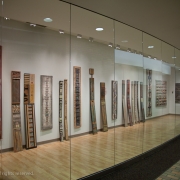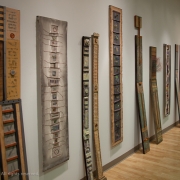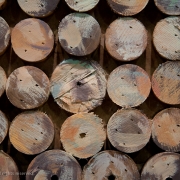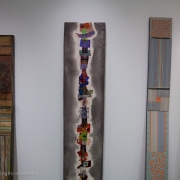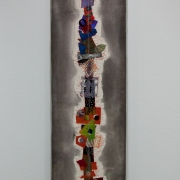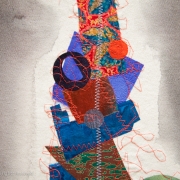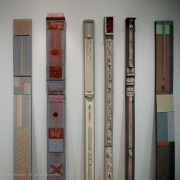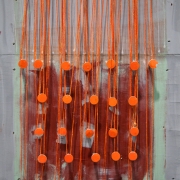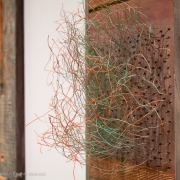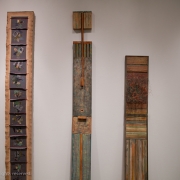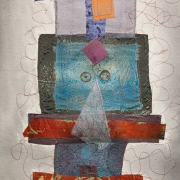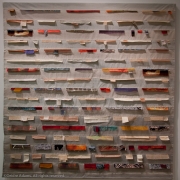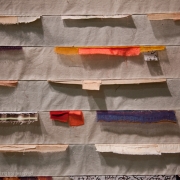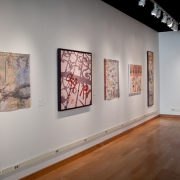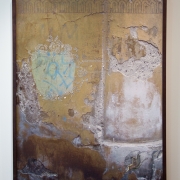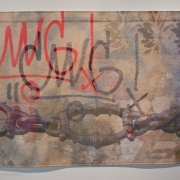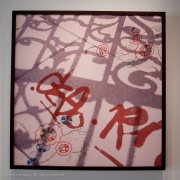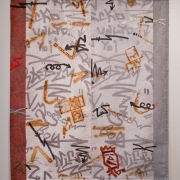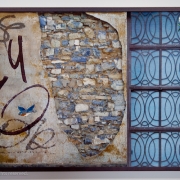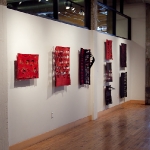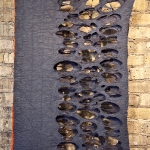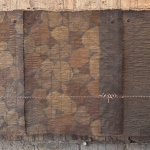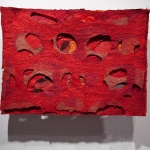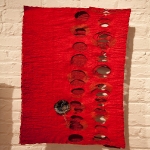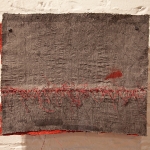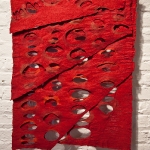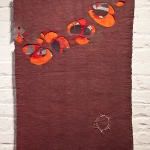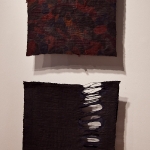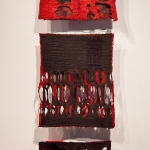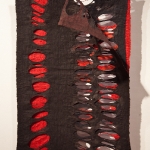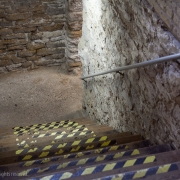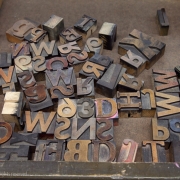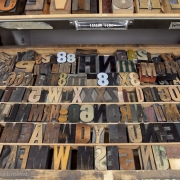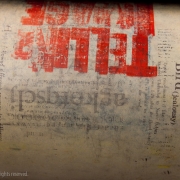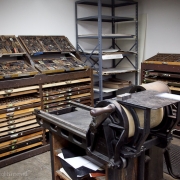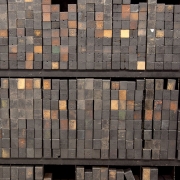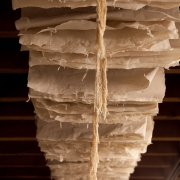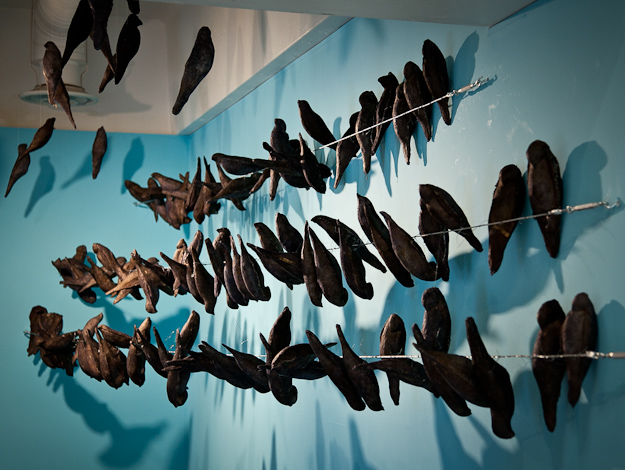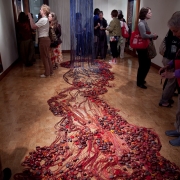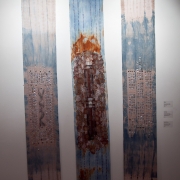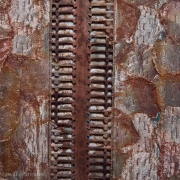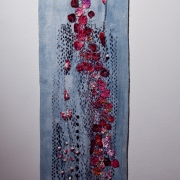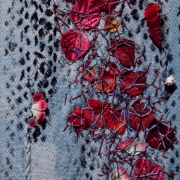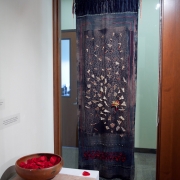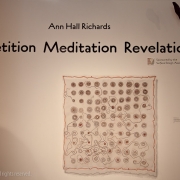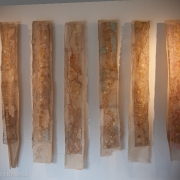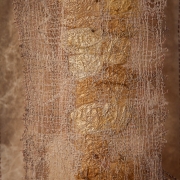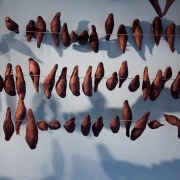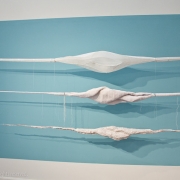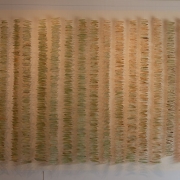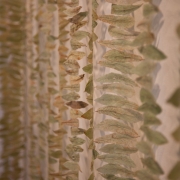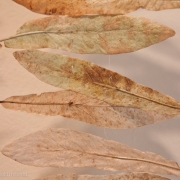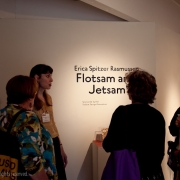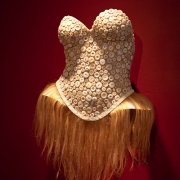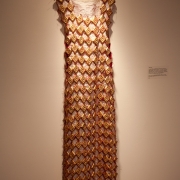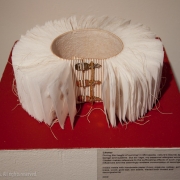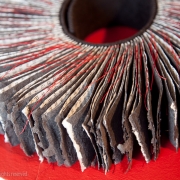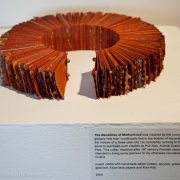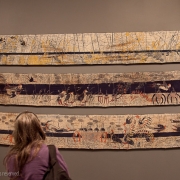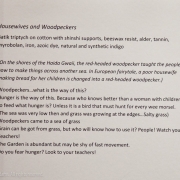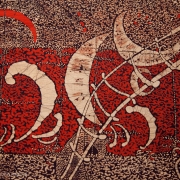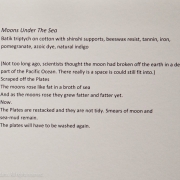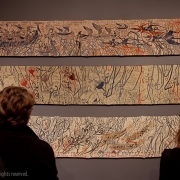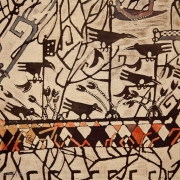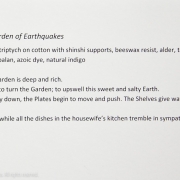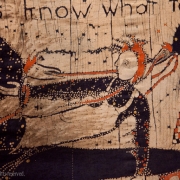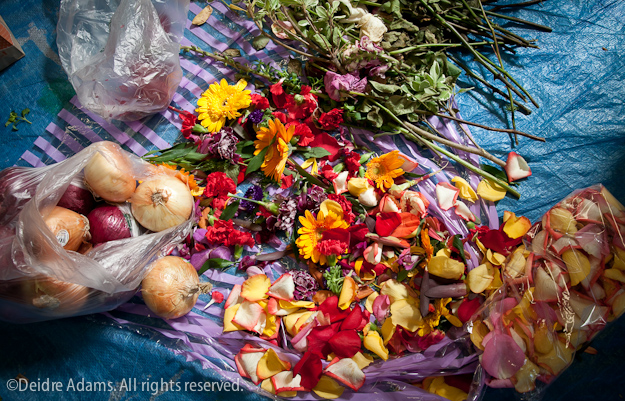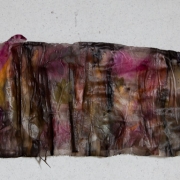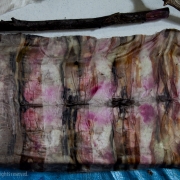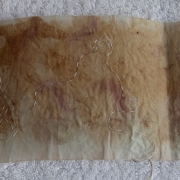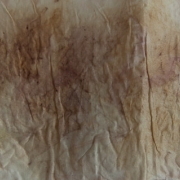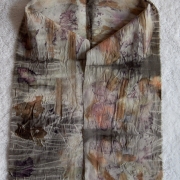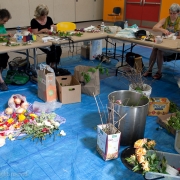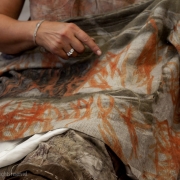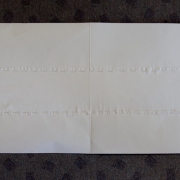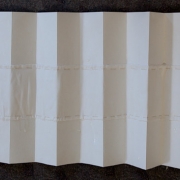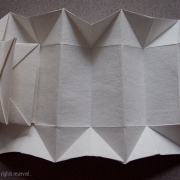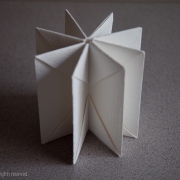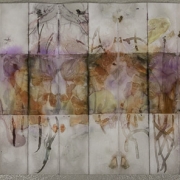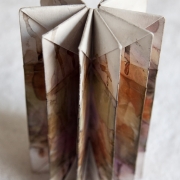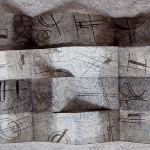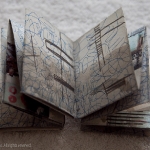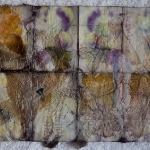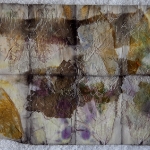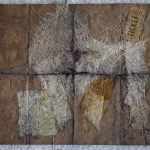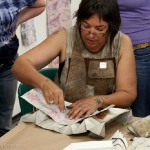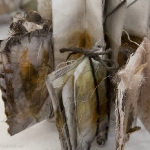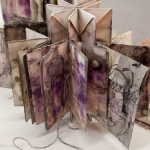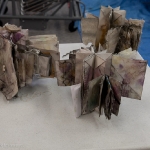SDA conference – gallery day, part II
Promise of Calmer Seas, detail, ©Jason Pollen
Sentinels – Jason Pollen
The Christensen Center Art Gallery, Augsburg College, Minneapolis, Minn.
Through July 29
It would be difficult to overestimate the contribution and influence Jason Pollen has had in the world of textile art over the last few decades. As a long-time president of the Surface Design Association and recently retired chair of the fiber department at Kansas City Art Institute, his artwork and his teaching have inspired countless numbers of students and working artists alike. I was fortunate to have had the opportunity to take a workshop with him in the Denver area several years ago, and some of the things I learned are integral to the work I’m making now.
The Winter 2011 issue of Surface Design Journal features an article on his work. “A Safe Place to Play,” by Geraldine Craig, provides a brief history of Jason and his work along with several beautiful photographs. I had been familiar with his textile work up until this point, but his latest work includes a series of tall wood sculptures with complex surface textures and varied colors. Reminiscent of human figures, these articulated structures simultaneously stand on the floor and lean against the wall in a relaxed yet watchful manner. According to the article, “Pollen views them as sentinels, protectors who distinguish between the protected and unknown potential prey.” These sculptures, along with 2 textile pieces, comprise the Sentinels exhibition.
The wall label for the exhibition says:
The inspiration for this exhibition stems from a prolonged experience of physical and emotional wounds, scars and mercifully, an ongoing significant recovery. Witnessing the stages of illness and vulnerability compelled me to create works that reflect on the universality of our fragility and strengths. Cloth, wood, stitching, color and mark-making are the tools I require in my passionate attempt to bring inanimate objects to life. My wish is that they might inspire those who connect with them.
–Jason Pollen
I would say he has succeeded admirably in his wish.
New Tools and Ancient Techniques – Teresa Paschke
Gage Family Art Gallery, Augsburg College, Minneapolis, Minn.
Through July 29
Iowa State University associate professor Teresa Paschke is “intrigued by the expressive possibilities that exist by merging sophisticated technology such as digital printing with the most modest ones–needle and thread.” The work in this exhibition is based on her experiences in Prague in 2008. It combines her photographs of street scenes, architecture, and graffiti, digitally manipulated and printed on fabric, with hand printing and hand stitching. She wants the viewer to consider how ornament and pattern express cultural and social ideals, and to consider how historical and contemporary forms of visual expression might be related – in this case, historical needlework and contemporary graffiti. The addition of the tactile stitching to the beautifully printed photographs was an unexpected and delightful surprise, bringing me in for closer inspection and consideration.
Whisper: Jiyoung Chung’s Joomchi
Minnesota Center for the Book Arts, Minneapolis, Minn.
Through June 24
Jiyoung Chung is a painter, mixed media artist, and freelance writer. This is an exhibition of her work using an “innovative method for utilizing a traditional Korean method of papermaking called Joomchi.” She also taught a pre-conference workshop at SDA, but it was held at the same time as the one I did take. If I ever get another opportunity to take a class from her, I’ll certainly do it, because I was very impressed with the work in this exhibition. The layering of the sheets, creating intricate interactions within the holes, made me think about the concept of “negative space” in a new way that’s giving some ideas for my own work. Several of the pieces also included stitching and threadwork. I especially loved how the work was hung, with the lighting adding an important contribution of shadows that brought it to life.
The Jiyoung Chung work is being shown at the Minnesota Center for Book Arts – a must-see if you are interested in paper, printmaking, or any form of book arts. Be sure to go downstairs and see their fantastic studios for letterpress and papermaking.



